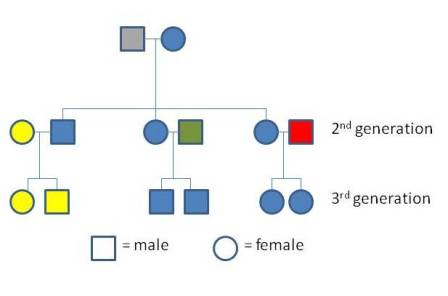The mitochondrial DNA team examines biological items of evidence from crime scenes to determine the mitochondrial DNA (mtDNA) sequence from samples such as hair, bones, and teeth. Typically, these items contain low concentrations of degraded DNA, making them unsuitable for nuclear DNA examinations.
 Example of calcified tissue - A molar
Example of calcified tissue - A molar
Currently, the BCA is supported to offer mtDNA testing for law enforcement agencies all over the United States; however, under the cooperative agreement with the FBI, 25% of our caseload can be dedicated to the state of Minnesota. Over the last 5 years, the BCA has conducted mtDNA testing for cases from 34 states.

Mitochondrial DNA is maternally inherited.
The high sensitivity of mtDNA analysis allows forensic scientists to obtain information from old items of evidence associated with cold cases and small pieces of evidence containing little biological material. Additionally the maternal inheritance of mtDNA allows scientists to compare the mtDNA profile of a set of remains to that of reference samples from individuals such as the mother, brother(s), sister(s), or any other maternally related individuals of a missing person. These samples should have the same mtDNA profiles because all maternal relatives inherit the same mtDNA. Since mtDNA is maternally inherited and multiple individuals can have the same mtDNA type, unique identifications are not possible using mtDNA analyses. However, mtDNA is an excellent technique to use for obtaining information in cases where nuclear DNA analysis is not feasible.

